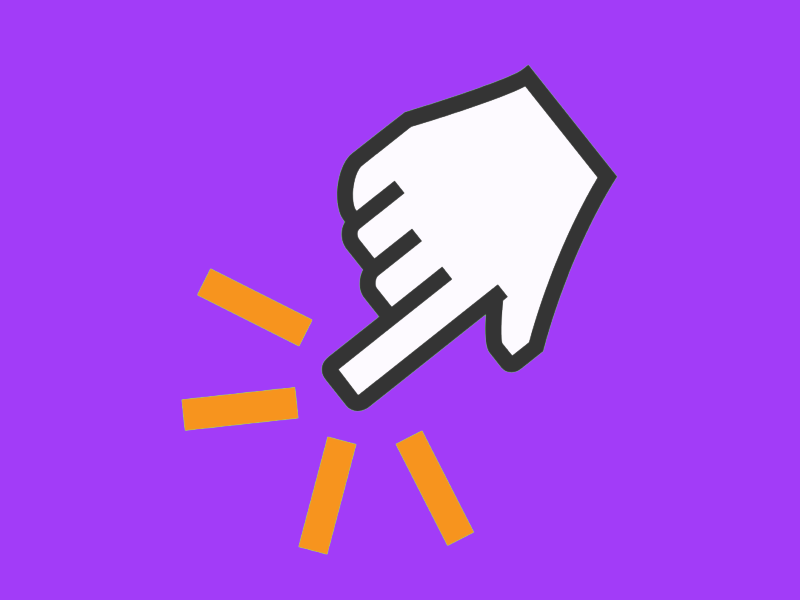If you’ve seen the acronym CTR on your PPC dashboard, you might be wondering, what is CTR? It stands for click through rate, and it refers to the amount of people clicking on your link or ad.
What is click through rate (CTR)?
If you’re running an ad campaign, your ad might display hundreds, even thousands of times. The CTR refers to the number of times people actually clicked on the link as a percentage related to the number of impressions or views. So if your ad has been displayed 1000 times and it is clicked on 10 times, that’s a CTR of 1%.
A CTR can refer to clicks on any variety of links online, which can include:
- A PPC ad on search engine pages
- A PPC ad on a website page
- An organic search engine result
- A call to action button, image, or link
- A link on social media such as Twitter or Facebook
- A link on a landing page
- Any other onsite element such as header, button, icon, image, text, etc
If you can click on it and measure the number of clicks it’s had, you can measure the CTR.
How to calculate CTR?
If you’re on a dashboard in Google Ads, Facebook Ads, Hubspot, or any other site which allows you to view your CTR, then you’ll most likely be able to see the percentage at a glance. But measuring your CTR sometimes comes in handy too. If you’re wondering how to calculate your CTR, it’s a case of working out percentages.
(Clicks / Views or impressions) * 100 = CTR
So if you had 1000 views and 23 clicks, that would be:
23/1000=0.23 * 100 = 2.3%
What is a good CTR?
A good click through rate varies depending on the channel where your link is appearing. For example, certain ads might perform particularly well on social media, while others might yield phenomenal results in a targeted email campaign.
For Google Ads, the good CTR or bad CTR depends heavily on your industry and where your ad is displayed. As Google features display ads and search engine results, the differences can be quite big.
Take, for example, ads in B2B on Google Ads. A good CTR in search results would be 2.5%, but in display ads (i.e: banner ads, video, etc), it’s more like 0.22%.
When you take the average across all industries, 1.91% is the average across search and 0.35% in display. In general, if you see a click through rate above 1.35% in search engine results, you’re doing OK. And if you’re seeing a display CTR of 0.15% or above, things are peachy.
When it comes to other channels, such as email campaigns, social media, or landing pages then, you’ll find the CTR average varies hugely and will depend on a number of factors.
CTR & Quality Score – How to optimize your campaigns
Google uses Quality Score as a way to target results to the audience correctly and to assess the cost of your search engine result. Quality Score is based on a number of things, including:
- Your CTR
- The relevance of keywords and content to the target group
- The UX (user experience) of your site or landing page
- Your ad text
- Historical performance of your ads or content in the past
In short, by carefully creating a high-quality landing page, optimising your keywords and search terms, and making the site user-friendly, you stand a better chance of landing that coveted top spot on Google. Pretty easy, then…
If you’re running an ad campaign on Facebook, you might notice that there are two different CTRs mentioned. One is clicks (all), and the other is link clicks. As Facebook features images and other forms of display, some of the clicks relate to people enlarging the image, clicking like or expanding the content to read. Link clicks of course applies to when people click through on your ad, so this is the true CTR, or at least the metric you’ll want to keep an eye on.
To optimise your content for Facebook, it normally needs to be engaging and normally ‘fun’. Bold images, shareable content, cool videos and enticing copy that makes people want to read more is the kind of content that normally works on Facebook.
How to increase CTR
When it comes to ads, improving your CTR is normally a case of optimising the content in the text. If you’ve done your research correctly this is often done by using long tail keywords. Try working out what people are looking for and try telling not selling. You’ll also be incorporating the keywords into the title copy. For example, consider “Buy best coffee online, fast delivery”, or instead “Fine fresh roasted coffee from Honduras”, which works much better.
The examples above are a simplified example of using a slightly outdated sales technique, that of claiming to be ‘the best’. Versus the more modern approach of letting the product do the talking, “fine”, “fresh roasted”. Which would you buy?
This also needs to apply to the meta description, which is the body of the text. Using more long tail search terms or including a call to action (CTA) which engages the buyer is going to be the best approach.
Creating a sense of urgency can also work to improve CTR, such as limited time sales or countdown deals.
Keep your title on your ad simple and make sure the copy isn’t trying to be clever or mysterious. Peoples attention online is shorter than ever, so grab them with bold simple headlines, make the description compliment the headline and you’ll see a good CTR.
